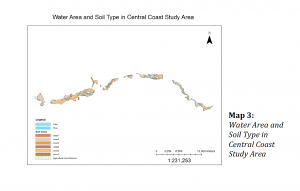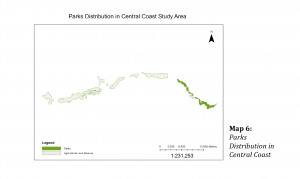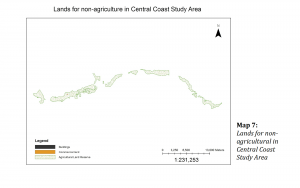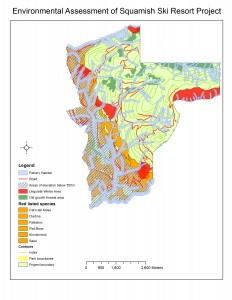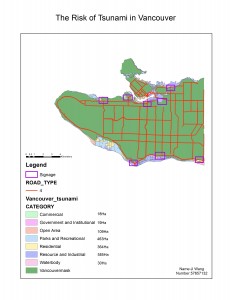Our final project is aim to give a realizable estimate of the amount of land within the Central Coast district, which is reserved for agriculture. The Agriculture Land Reserve (ALR) was established by BC provincial government in 1973. It is a policy to make more contribution to protects the agriculture land to strengthen provincial food security. However, in recent years, the ALR was threated by the increasing urbanization and lad development. In order to analysis the efficacy of the ALR we need know how much of ALR is being used for agriculture. To do this, we used the GIS software to analyze different data to evaluate the ALR in central coast in both biogeographically and social aspect, specifically, we target on the forest cover, soil types, parks, roads, water features and so on. So as to accomplish the project, our teammates followed the proposal, we did the map through regular lab time and organized the report through google doc. Jerry is mainly responsible for the map-making, Tina and I was helped with download the data, and Ziyu is assist Jerry with map and along with record the necessary data. And finally, we finish the report together, and Tina—as the main editor, she went through each part and generalized the report.
As for my personal contribution to the group, I found this project is not only useful, but also helped me develop some GIS skills, especially how to find the data—some of the data is provide freely by the BC government. I can easily access the Terrain Resource Information Management (TRIM) data, download what Jerry need, by buffering all the lakes and rivers, Jerry conducted a map of water features in the central coast area. (MAP 3) I was also used the Digital Elevation Management data (DEM), to reclassify and determine how much of the ALR is over 30 degree, which is not suitable for agriculture land. Thanks to Jerry’s technology skill, he perfectly performs the data by using the ArcMap software.
The use of land in one region should be very diverse, especially for places with urban development. In Central Coast region, we were expected to evaluate the different types of land use, however, it was very challenging to accomplish this task with detailed analysis. We searched data from DataBC, CHASS and Geofabric but the only land use types we got was building, commercial, roads and parks, (map 6 &7) which were the very basic ones. Broad research about the use of land in the following categories: factory, industry, school, hospital, community centers, recreational centers, shopping malls, clinic etc. could not be conducted due to the limited data provided. Although this region has very small population compared to other districts in British Columbia, it does mean that this region is not an important piece of land in BC. It can be developed in to a center of economic and recreational activities in the future. The government should provide data about detailed land use, so that scholars are able to study the geography of this area, and companies can get to know the region for future investment.
Accomplish Statement
- Effective team-working skills by conducting a team report with specific agricultural land reserve area in Central Coast, in order to see how much of the area could still currently be used for agriculture, and the implications and reasons for our findings.
